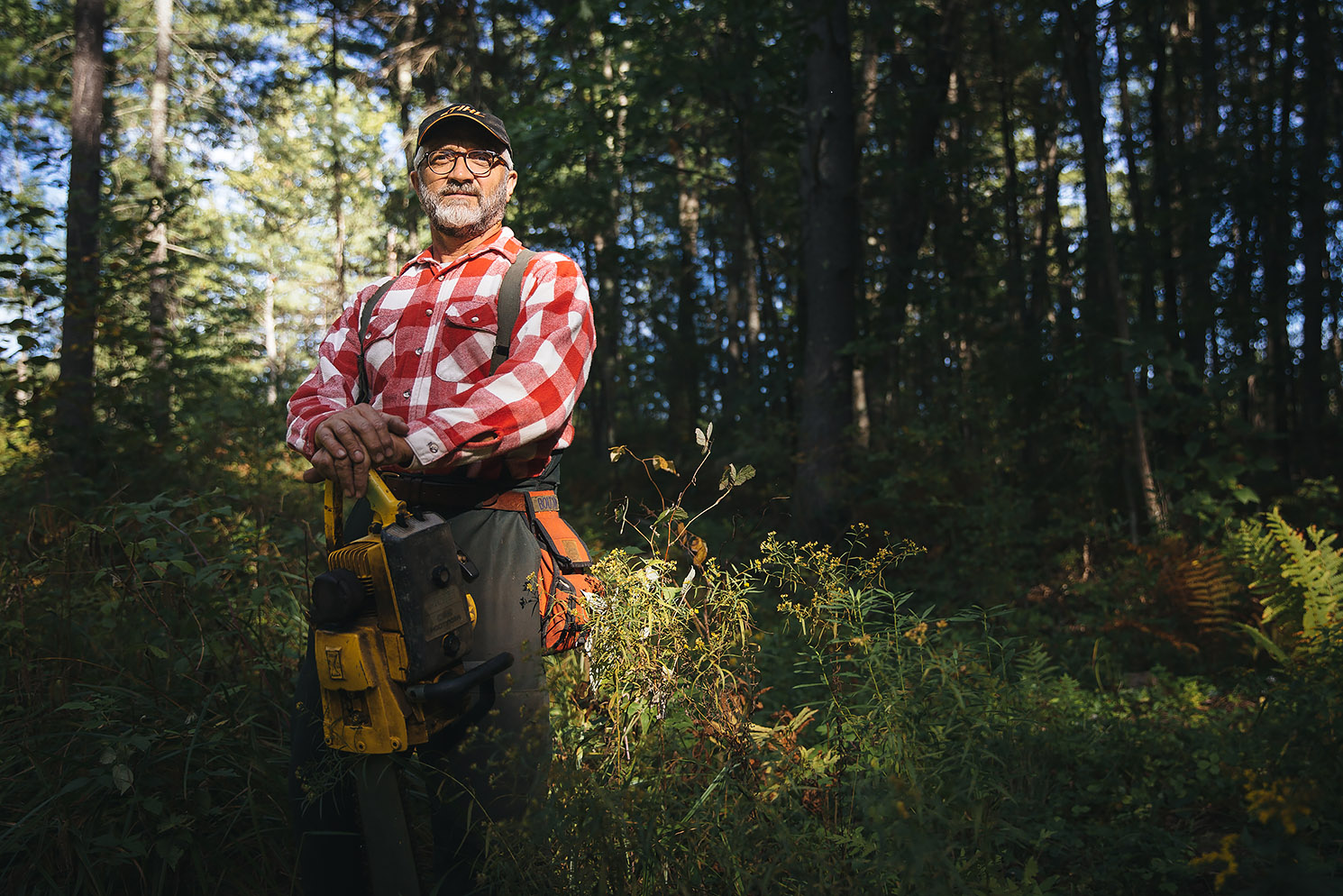
Source: BikeEXIF –
[[{“value”:”For Clermont Boutin, the son of an old-time Canadian lumberjack, life is at its best when he’s in the backwoods with a chainsaw in his hands. “I just sort of lose myself out here,” he muses. “Being in the outdoors and operating a saw, I don’t have to think. It just comes natural.”
He recalls when he was two years old and his father was on the front porch cleaning his saw. Clermont jumped and in the process was nicked by the blade. The resulting scar is still visible today. “I like to say that that’s when I got bit by the chainsaw bug,” he says. “It’s been in my blood ever since.”
The bug bit hard as he gives us a glimpse into the world of chainsaws. In his Manchester, NH garage, some 120 grace the wood shelves, representing six decades of chainsaw evolution. “I felt as though someone needed to preserve the rich history and heritage of these machines,” he says, explaining the genesis of his collection. “Why not me? I just love seeing how they’ve evolved from the heavy, dangerous contraptions of the 1940s into the light, fast, and safer saws of today.”
The first gas-powered saws appeared in the 1920s. They were heavy at about 130 pounds, slow, unreliable and required two men to handle them — not exactly efficient. In 1944, Industrial Engineering Ltd. introduced the “Beaver,” the first one-man chainsaw, forever freeing lumbermen and empowering them to fell and cut many trees in a single day. Not only did it increase their output, but it raised their social status as well. Previously seen as lowly laborers, they now were viewed as skilled machine operators and specialists in their trade.
These old saws, with their snarling chains and absence of any of safety features, were a constant threat to life and limb as their history is colored with stories of severed legs and arms. Although safety components have come a long way throughout the years, there’s good reason why they’re still considered the most dangerous power tool.
1951 IEL “SUPER PIONEER” Vancouver, British Columbia One of the first saws introduced to the lumberjacks of the Pacific Northwest. It was heavy, slow (4,500 rpm) had a complicated transmission, the carburetor had to remain vertical and required constant awkward pumping of the chain oil. Virtually zero safety features.
1954 WEBER INC. “CHOREMASTER” Cincinnati, Ohio An improvement over previous versions thanks to the placement of its chain oil pump, the addition of a kill switch and a carburetor separated from the body. But this belt-driven, 27-pound behemoth was a bear to wield and a “chest-splitter” if the chain broke.
1962 WRIGHT SAW C50-D Sheboygan, Wisconsin This early reciprocating saw was safer and easier to use than its counterparts in some respects, but it cut very slowly. Weighing in at 23 pounds and operating at a top speed of 2,500 rpm, the Wright never really caught on, but it was a predecessor to the modern Sawzall.
1964 HOMELITE XL-12 Port Chester, New York A big jump in chainsaw evolution, the XL12 was pared to a mere 12 pounds, the transmission was eliminated, creating more torque and less kick-back, a diaphragmed carburetor allowed the engine to work at all angles, and an ergonomic oil pump and kill switch made it easier to use. It also boasted over 7000 rpm.
1971 REMINGTON ARMS CO. “WEEKENDER” Toronto, Ontario, Canada Instead of being marketed to professional lumberjacks, this machine was aimed at the large army of homeowners who needed to do some pruning and storm clean-up. At only 6 pounds and featuring an automatic chain oiler, the “Weekender” found its way into countless garages.
1990 HUSQVARNA 262-XP Husqvarna, Sweden A professional saw that incorporates technology that is still in use today. A chain brake, chain throw, and guard handle all add up to a new level of protection. Anti-vibration dampers and independent components make for a more comfortable cutting experience while a blistering 13,000 rpm tears through timber as never before.
This article first appeared in issue 025 of Iron & Air Magazine, and is reproduced here under license
Words by Michael Hilton | Images by Brett Houle & Gregory George Moor”}]]




